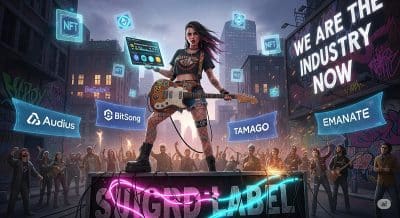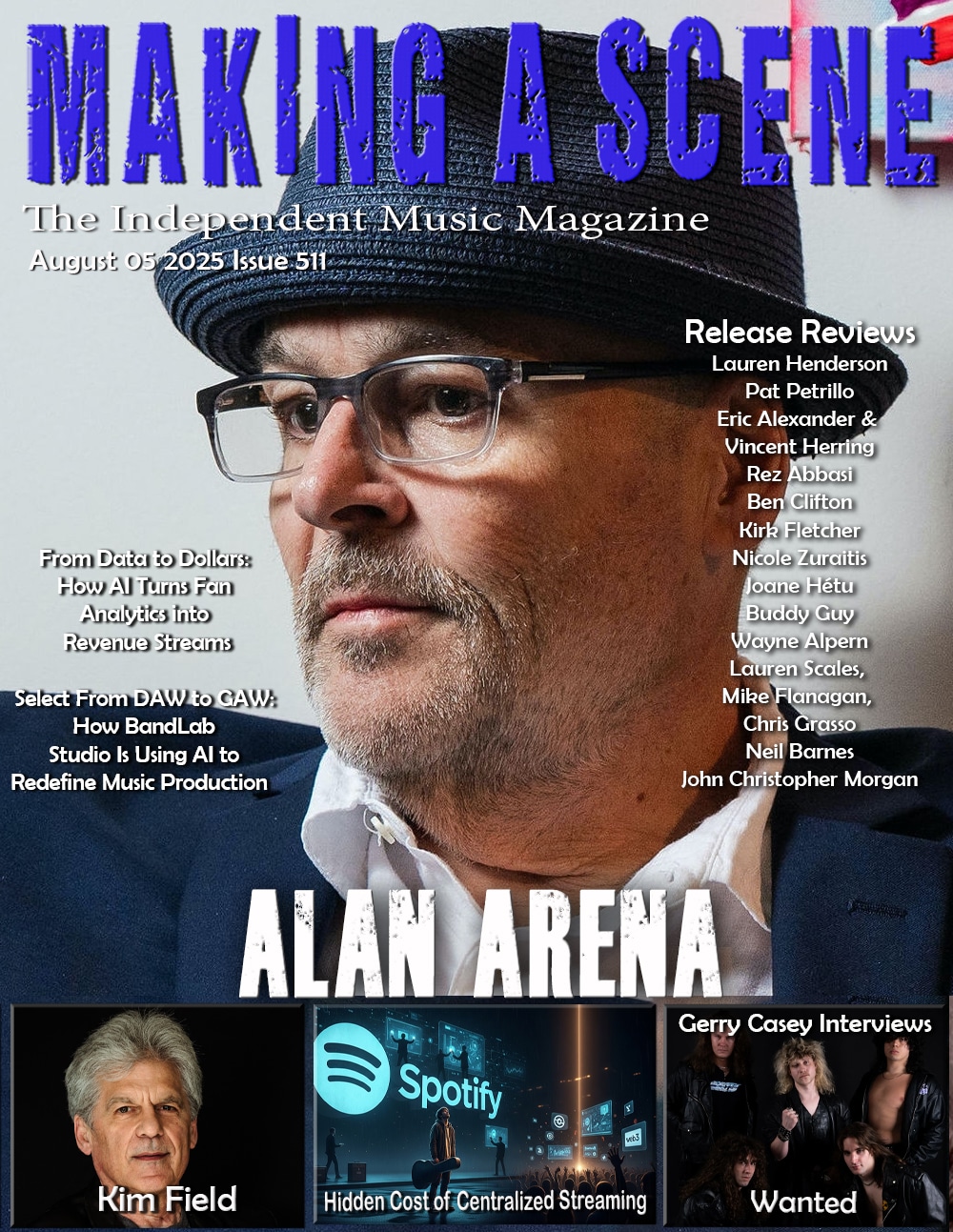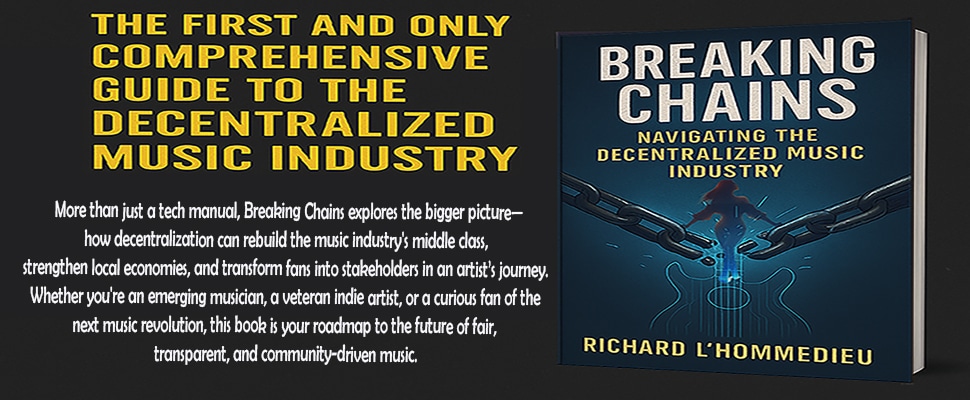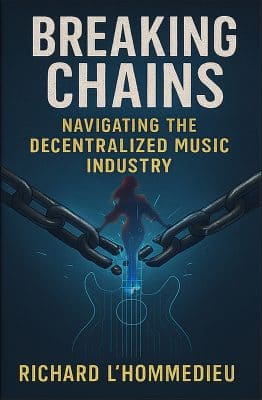How to Launch Your Music on a Blockchain-Based Platform: A Step-by-Step Guide for Indie Artists
Making a Scene – How to Launch Your Music on a Blockchain-Based Platform: A Step-by-Step Guide for Indie Artists
Take control. Keep more of your money. Build a real connection with your fans.
If you’re an independent musician, chances are you’ve had some frustrations with traditional streaming platforms. Maybe it’s the tiny payouts. Maybe it’s the lack of transparency. Or maybe you’re just tired of playing by someone else’s rules. Whatever the reason, you’re not alone—and the good news is, there’s another way.
It’s called the blockchain-based music platform. And no, you don’t need to be a tech wizard or a crypto bro to use it.
This guide will walk you through what a blockchain music platform actually is, how it’s different from Spotify or Apple Music, and most importantly—how to upload your music to one of these platforms so you can start taking back control of your career. We’ll keep it real simple, walk through every step, and keep things light along the way.
Let’s get into it.
 What Is a Blockchain Music Platform?
What Is a Blockchain Music Platform?
Imagine if you could upload your music to a platform where you didn’t need a label, where fans could pay you directly, and where you got paid instantly. No middlemen. No waiting months for royalties. Just fair and direct compensation.
That’s what a blockchain music platform is.
It’s basically a music streaming site that runs on blockchain technology. Instead of being owned by one company (like Spotify), it’s decentralized—meaning it’s powered by the community and runs on code. This makes everything more transparent, secure, and fair.
Some popular blockchain music platforms include Audius, Emanate, and OPUS. Each one has its own vibe and features, but they all give you more control and better payment systems.
Why Use a Blockchain Platform Instead of Spotify?
Good question. Spotify has the name recognition and a big audience, but here’s the problem: most indie artists make less than a penny per stream. And the algorithm favors major-label artists. Even if you work super hard, it’s tough to stand out.
Blockchain platforms flip that model on its head. You earn more per stream. You can tokenize your music (more on that later), sell it directly to fans, and even let fans share in your success. Think of it as a new music economy—one that’s actually built for artists like you.
Getting Started: Uploading to Audius
Let’s start with Audius, one of the most popular decentralized music platforms out there right now.
Head over to audius.co and click “Sign Up.” All you need is an email and a strong password. Once you’re in, set up your artist profile with your name, photo, and bio—just like you would on Spotify.
Click “Upload Track” at the top. Drag and drop your song file—WAV or MP3 is fine. You’ll be asked for some info: the song title, genre, description, and whether it’s part of an album. You can also upload artwork and tag any collaborators.
Once uploaded, your music gets saved to the blockchain. That means it can’t be changed, stolen, or taken down without your permission.
Now here’s the sweet part: you start earning AUDIO tokens whenever people stream your song. These tokens are a type of cryptocurrency. You can hold onto them, trade them for dollars, or use them inside the Audius ecosystem to promote your music or unlock special features.
And get this—Audius doesn’t charge you to upload music. No monthly fees. No credit card needed. Just pure artist-first tech. In fact, Making a Scene uses Audius as one of the platforms for it’s podcasts!
Uploading to OPUS
OPUS is a little more advanced, but super powerful. It’s built on the Ethereum blockchain, which means high-level security and deep decentralization.
Go to opus.audio. To use OPUS, you’ll need a digital wallet like MetaMask. Think of this like your login and bank account for the blockchain world. You can install MetaMask as a browser extension, create a password, and save your secret backup phrase somewhere safe (seriously, don’t lose it).
After you connect MetaMask to OPUS, you’ll create your artist profile. Then you’re ready to upload.
Choose your audio file, fill in the track details, and hit upload. Since it runs on Ethereum, you might need to pay a small transaction fee called gas. This secures your song on the blockchain and makes it permanent.
Once it’s live, fans can stream or buy it directly. OPUS also lets you turn your tracks into NFTs, giving fans a unique way to support you. Some fans might collect your music. Others might resell your NFTs—and if they do, you can get royalties from every resale.
It’s a totally different world, and a lot more artist-friendly than the old system.
 Uploading Your Music to Tamago
Uploading Your Music to Tamago
Now let’s talk about another exciting platform that’s making waves in the Web3 music scene—Tamago.
Tamago is a blockchain-powered streaming platform built on the NEAR Protocol. It’s designed specifically for electronic and indie artists who want to earn fairly from their streams, connect directly with fans, and be part of a creator-first economy.
The best part? You don’t need to jump through a bunch of hoops to get started. Here’s how it works:
First, head over to tamastream.info. You’ll notice right away that it looks fresh, simple, and music-focused. It’s like the Web3 version of SoundCloud but with way better revenue sharing for artists.
Click on the “Connect Wallet” button in the top right. Tamago uses the NEAR blockchain, so you’ll need a NEAR wallet. If you don’t have one, no problem. Just click “Create NEAR Wallet” and follow the steps. It takes about two minutes to set up and doesn’t require any crypto to start.
Once your wallet is connected, you’ll be asked to create your artist profile. This is your space, so make it count—add your artist name, bio, links, and a great profile image. Think of it like your own mini homepage.
Now, go to the “Upload” section. Tamago accepts standard audio formats like MP3 or WAV. Drop your track, then add a title, cover art, genre, and any other details. You’ll also be asked if you want to set a streaming price—yep, you can decide if fans can stream for free or if they need to pay tokens to listen. That’s up to you.
Here’s where Tamago shines: when someone streams your track, you instantly earn $TAMA tokens, which are native to the Tamago ecosystem. There’s no waiting weeks or months for payout. These tokens go directly to your NEAR wallet, and you can use them in the Tamago marketplace or swap them for other crypto.
Tamago also allows you to upload exclusive tracks, build custom playlists, and join live drops or promotional features to reach new listeners. Since everything runs on the blockchain, you get full transparency on plays and payments, and you stay in total control of your music.
One more bonus—Tamago is artist-curated. That means they’re all about supporting real creators, not just hyping algorithms or trending junk. You’re part of a scene that actually cares about the art.
Uploading Your Music to BitSong
Another powerful player in the world of decentralized music is BitSong—a platform that goes beyond just streaming. It’s designed to be a complete music ecosystem, combining streaming, NFTs, fan engagement, and token-based rewards all in one place.
BitSong runs on the Cosmos blockchain, which makes it super fast, energy-efficient, and perfect for artists who want a flexible and future-proof way to release music. It’s also one of the few Web3 platforms aiming to support every part of an artist’s journey—from uploading to promoting to earning real income.
To get started, go to bitsong.io and click “Launch App” or “Join the Community.” You’ll need to connect a digital wallet to use the platform. BitSong works with Keplr Wallet, a popular wallet in the Cosmos ecosystem. If you don’t already have Keplr installed, just visit keplr.app and follow the steps—it’s quick and user-friendly.
Once your wallet is connected, you can access the BitSong Dashboard. This is your control center as an artist. You’ll be able to upload music, create NFTs, set up your profile, and manage your royalties all in one place.
To upload music, look for the “Create” or “Upload Music” section. You’ll be asked to upload your audio file (MP3, WAV, or FLAC), your cover art, and some basic info about the track—title, genre, description, collaborators, and so on.
But BitSong doesn’t just stop there. You also have the option to mint your song as an NFT, . You can set how many copies are available, how much each one costs, and whether fans get special perks like exclusive content or early access to new songs. If you want, you can even set up royalty splits right there in the upload flow, making sure your co-writers or producers get their fair share.
When someone streams your music or buys your NFT, you get paid in $BTSG tokens (BitSong’s native currency), which are instantly sent to your wallet. You can trade these tokens, use them to promote your tracks on the platform, or hold onto them as they grow in value.
One of BitSong’s coolest features is its Artist Token system. You can create your own personalized artist token that fans can buy and hold. These tokens can unlock rewards, backstage content, or even voting power on what you should release next. It’s a next-level fan engagement tool that really sets BitSong apart.
BitSong is building a music industry that’s transparent, community-powered, and fair to artists. It’s not just about uploading songs—it’s about creating your own music economy where you and your fans win together.
| Platform | Blockchain | Token | Music NFT Support | Direct Fan Payments | Royalty Splits | Wallet Required | |
| Audius | Solana/Ethereum | AUDIO | Optional | Yes | Basic | No | |
| OPUS | Ethereum | ETH | Yes | Yes | Smart Contracts | Yes (MetaMask) | |
| Tamago | NEAR | TAMA | Optional | Yes | Not Yet | Yes (NEAR) | |
| BitSong | Cosmos | BTSG | Yes | Yes | Yes | Yes (Keplr) | |
What’s the Deal with Crypto?
Don’t worry—you don’t need to be a crypto expert to use these platforms. Most of them let you sign up and upload music without spending a single token. But once you start earning (through tips, streams, or sales), you’ll be rewarded in crypto. That might be AUDIO on Audius, EMT on Emanate, or ETH (Ethereum) on OPUS. You can hold these tokens, convert them to dollars, or use them to buy cool stuff on the platform. It’s like turning your streams into actual money—and doing it faster than Spotify ever could.
What About Copyright?
Blockchain platforms actually help protect your copyright. When you upload a song, it’s time-stamped on the blockchain forever. That means if someone tries to steal your work, you’ve got proof you made it first. Still, it’s a good idea to register your music with your country’s copyright office and performance rights organization (like BMI or ASCAP) just to be safe. Blockchain doesn’t replace traditional copyright—but it adds an extra layer of protection that’s super helpful.
Fans Love It Too
Here’s something else to think about: blockchain music isn’t just better for artists—it’s better for fans. Fans can listen for free, just like on Spotify. But they also get the chance to support you directly. They can tip you, buy your NFTs, join exclusive groups, or stake tokens to help promote your songs. Some platforms even reward fans with free tokens just for listening. This creates a real community around your music—not just followers, but people who are actually invested in your success. And because everything is transparent, fans know exactly where their money is going. No middlemen. No shady cuts. Just artist and fan, connected directly.
The Big Picture: Why Decentralization Matters
The decentralized music industry isn’t just a cool new feature—it’s a full-on revolution. You’re no longer stuck begging for playlists or chasing pennies from platforms that don’t care about you. Now you’ve got options. Now you’ve got control.
With blockchain, you can:
Own your music completely
Set your own rules
Get paid instantly
Build real, direct relationships with your fans
Create multiple income streams—from streaming, tipping, NFT sales, and more
And the best part? It’s still early. Artists who get in now are building the future of music before the big corporations can ruin it.
Final Thoughts
Let’s be real—you don’t have to abandon Spotify right now. It’s still one of the biggest platforms in the game, and for better or worse, it’s where a lot of fans go to find music. It plays a massive role in how people discover new artists, and that reach shouldn’t be ignored.
But here’s what a lot of people don’t realize: independent artists now make up over 90% of the content on streaming platforms. That’s right. The so-called “little guys” are the ones filling these platforms with music. Not the major labels. Not the pop giants. Indie artists—like you.
That means you have more power than you think.
Instead of being stuck following outdated business models that barely pay the bills, you have the opportunity to lead the change. By introducing your fans to platforms like Audius, Emanate, OPUS, Tamago, and BitSong, you’re not just experimenting with new tech—you’re helping reshape the music industry itself.
This isn’t about picking one platform over another. It’s about building a future where artists have control, where fans are part of the journey, and where the system actually works for the people making the music.
You can keep using Spotify while still planting seeds in Web3. You can stream to the masses and still own your masters. You can be part of both worlds—just don’t let the old one define your limits.
Because the future of music doesn’t belong to the platforms. It belongs to the creators who dare to lead.
If you want to learn more about Decentralized Music Industry check out the ONLY guide that teaches the Indie artist what they need to know to move their music business to the decentralized Music Industry!
Breaking Chains: Navigating the Decentralized Music Industry
THIS IS THE BOOK THEY DON’T WANT YOU TO READ!!
Buy Us a Cup of Coffee!
Join the movement in supporting Making a Scene, the premier independent resource for both emerging musicians and the dedicated fans who champion them.
We showcase this vibrant community that celebrates the raw talent and creative spirit driving the music industry forward. From insightful articles and in-depth interviews to exclusive content and insider tips, Making a Scene empowers artists to thrive and fans to discover their next favorite sound.
Together, let’s amplify the voices of independent musicians and forge unforgettable connections through the power of music
Make a one-time donation
Make a monthly donation
Make a yearly donation
Buy us a cup of Coffee!
Or enter a custom amount
Your contribution is appreciated.
Your contribution is appreciated.
Your contribution is appreciated.
DonateDonate monthlyDonate yearlyYou can donate directly through Paypal!
Subscribe to Our Newsletter
Order the New Book From Making a Scene
Breaking Chains – Navigating the Decentralized Music Industry
Breaking Chains is a groundbreaking guide for independent musicians ready to take control of their careers in the rapidly evolving world of decentralized music. From blockchain-powered royalties to NFTs, DAOs, and smart contracts, this book breaks down complex Web3 concepts into practical strategies that help artists earn more, connect directly with fans, and retain creative freedom. With real-world examples, platform recommendations, and step-by-step guidance, it empowers musicians to bypass traditional gatekeepers and build sustainable careers on their own terms.
More than just a tech manual, Breaking Chains explores the bigger picture—how decentralization can rebuild the music industry’s middle class, strengthen local economies, and transform fans into stakeholders in an artist’s journey. Whether you’re an emerging musician, a veteran indie artist, or a curious fan of the next music revolution, this book is your roadmap to the future of fair, transparent, and community-driven music.
Get your Limited Edition Signed and Numbered (Only 50 copies Available) Free Shipping Included
Discover more from Making A Scene!
Subscribe to get the latest posts sent to your email.











